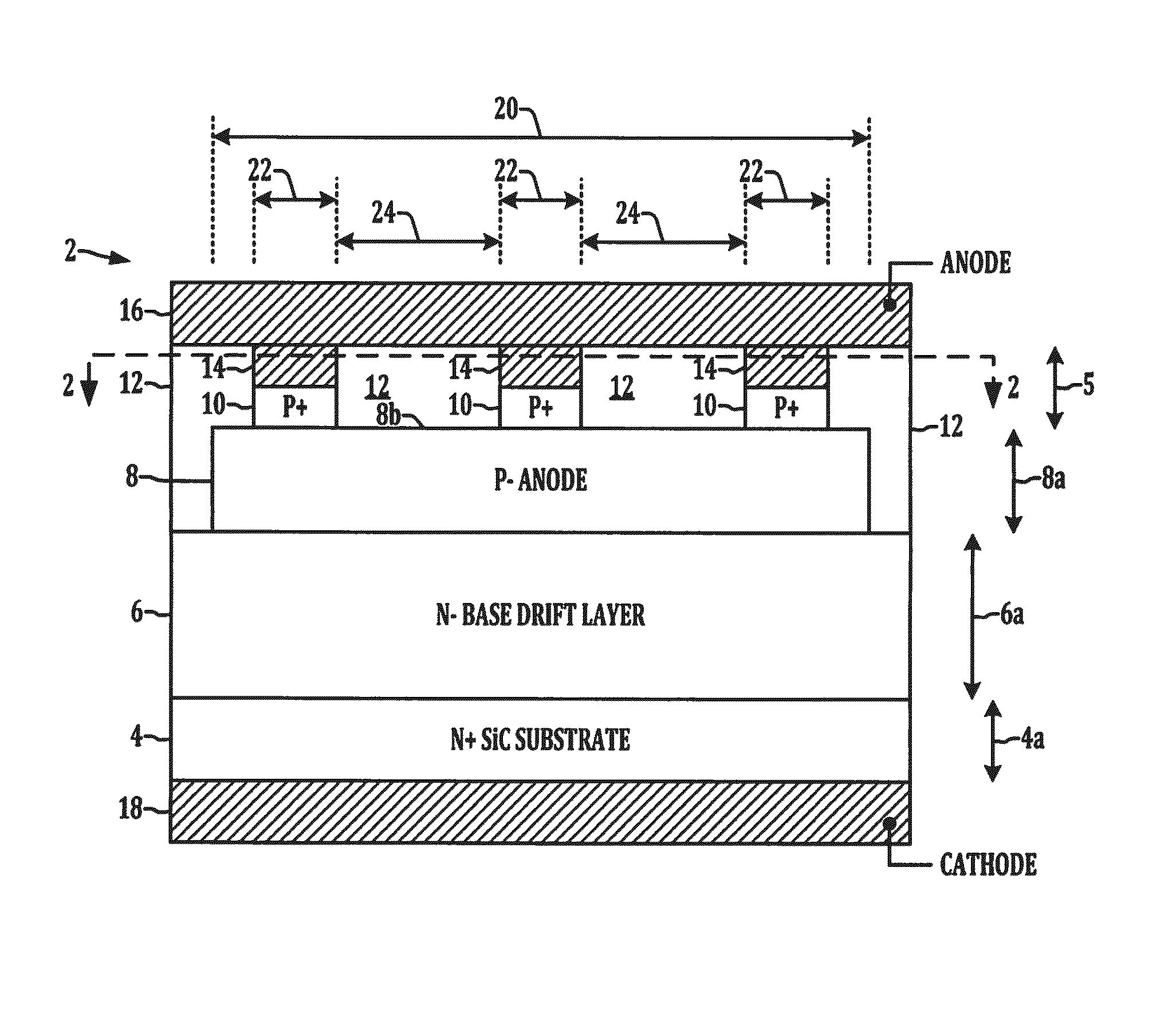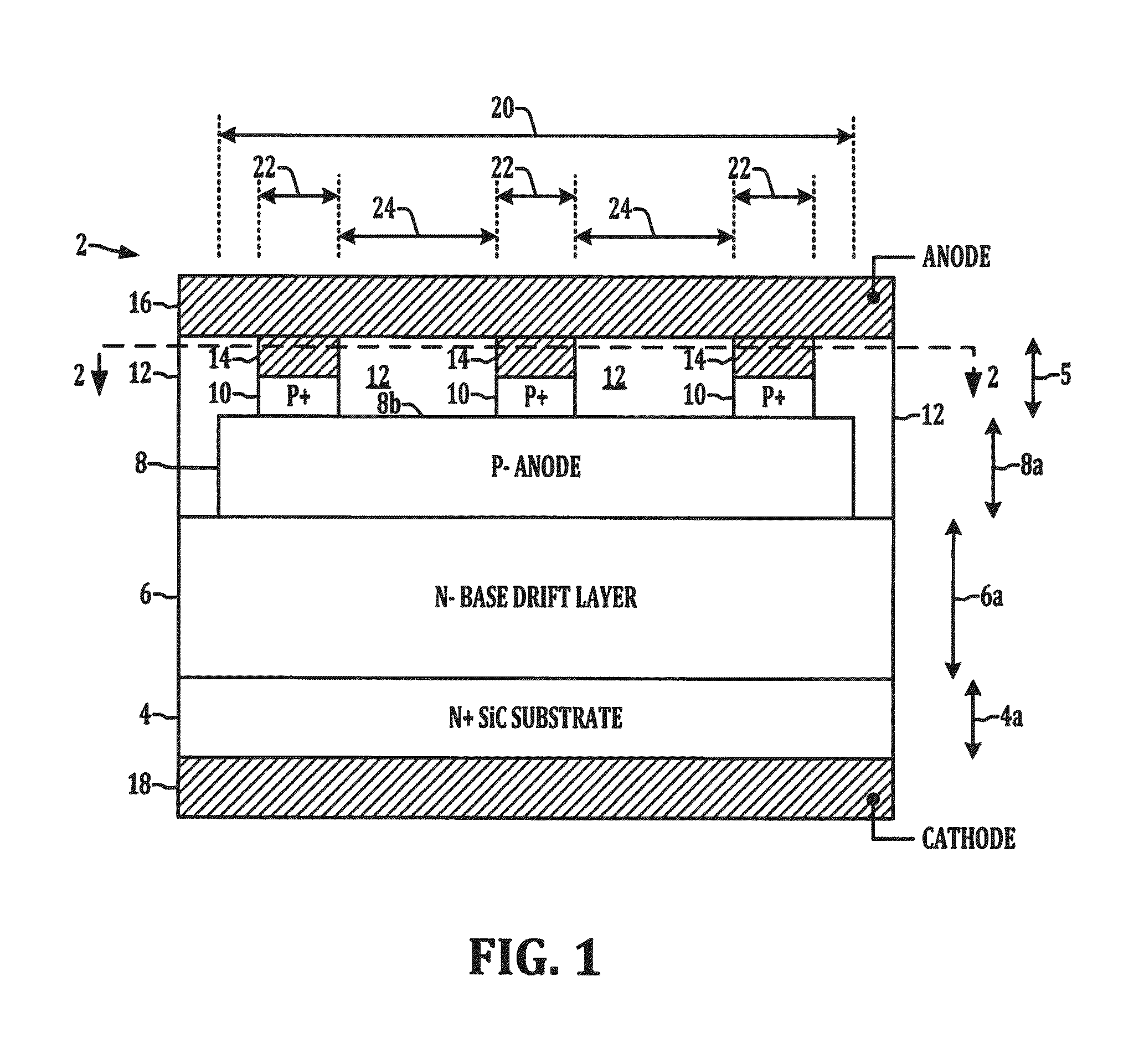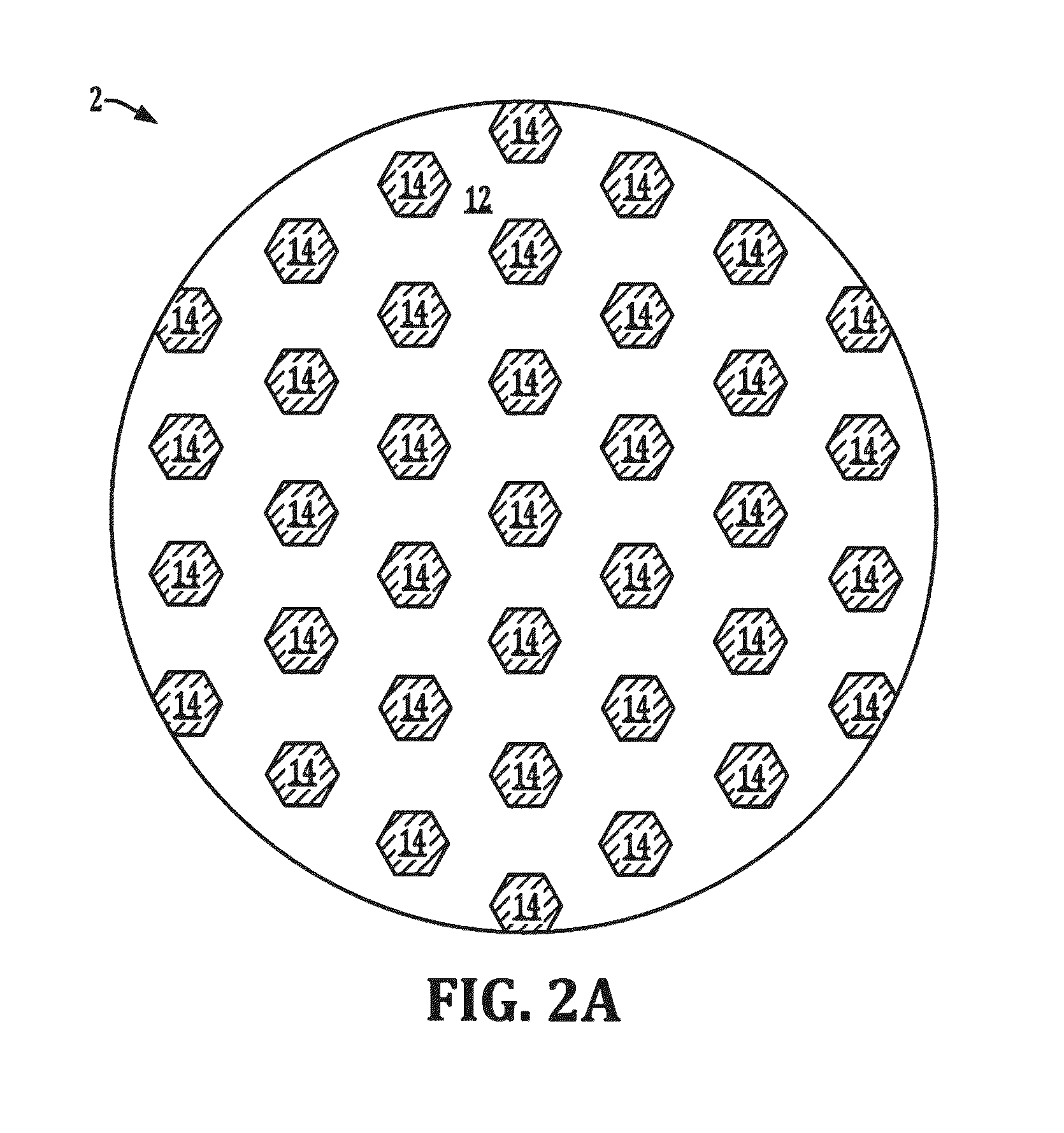Silicon carbide rectifier
a silicon carbide rectifier and silicon carbide technology, applied in the direction of basic electric elements, electrical equipment, semiconductor devices, etc., can solve the problems of negative temperature coefficient of forward voltage drop, thermal runaway, negative temperature coefficient of conventional silicon carbide pin rectifiers, etc., to reduce reverse recovery charge, reduce carrier density, and reduce current value
- Summary
- Abstract
- Description
- Claims
- Application Information
AI Technical Summary
Benefits of technology
Problems solved by technology
Method used
Image
Examples
Embodiment Construction
[0018]One or more embodiments or implementations are hereinafter described in conjunction with the drawings, where like reference numerals refer to like elements throughout, and where the various features are not necessarily drawn to scale. FIGS. 1 and 2A-2D illustrate certain embodiments of a low crossover point silicon carbide PiN diode or power rectifier 2 with limited anode contact area in accordance with one or more aspects of the present disclosure, and FIG. 3 shows an exemplary process 50 for fabricating the rectifier 2. Several embodiments of improved SiC PiN diodes or rectifiers are described herein, having reduced or lowered current value for the crossover point between positive and negative temperature coefficient of forward voltage. The improved SiC PiN diodes in certain implementations may advantageously have lower carrier density in the drift layer for reduced reverse recovery charge and reduced reverse recovery peak currents.
[0019]As best seen in FIG. 1, the rectifier...
PUM
| Property | Measurement | Unit |
|---|---|---|
| thickness | aaaaa | aaaaa |
| thickness | aaaaa | aaaaa |
| thickness | aaaaa | aaaaa |
Abstract
Description
Claims
Application Information
 Login to View More
Login to View More - R&D
- Intellectual Property
- Life Sciences
- Materials
- Tech Scout
- Unparalleled Data Quality
- Higher Quality Content
- 60% Fewer Hallucinations
Browse by: Latest US Patents, China's latest patents, Technical Efficacy Thesaurus, Application Domain, Technology Topic, Popular Technical Reports.
© 2025 PatSnap. All rights reserved.Legal|Privacy policy|Modern Slavery Act Transparency Statement|Sitemap|About US| Contact US: help@patsnap.com



